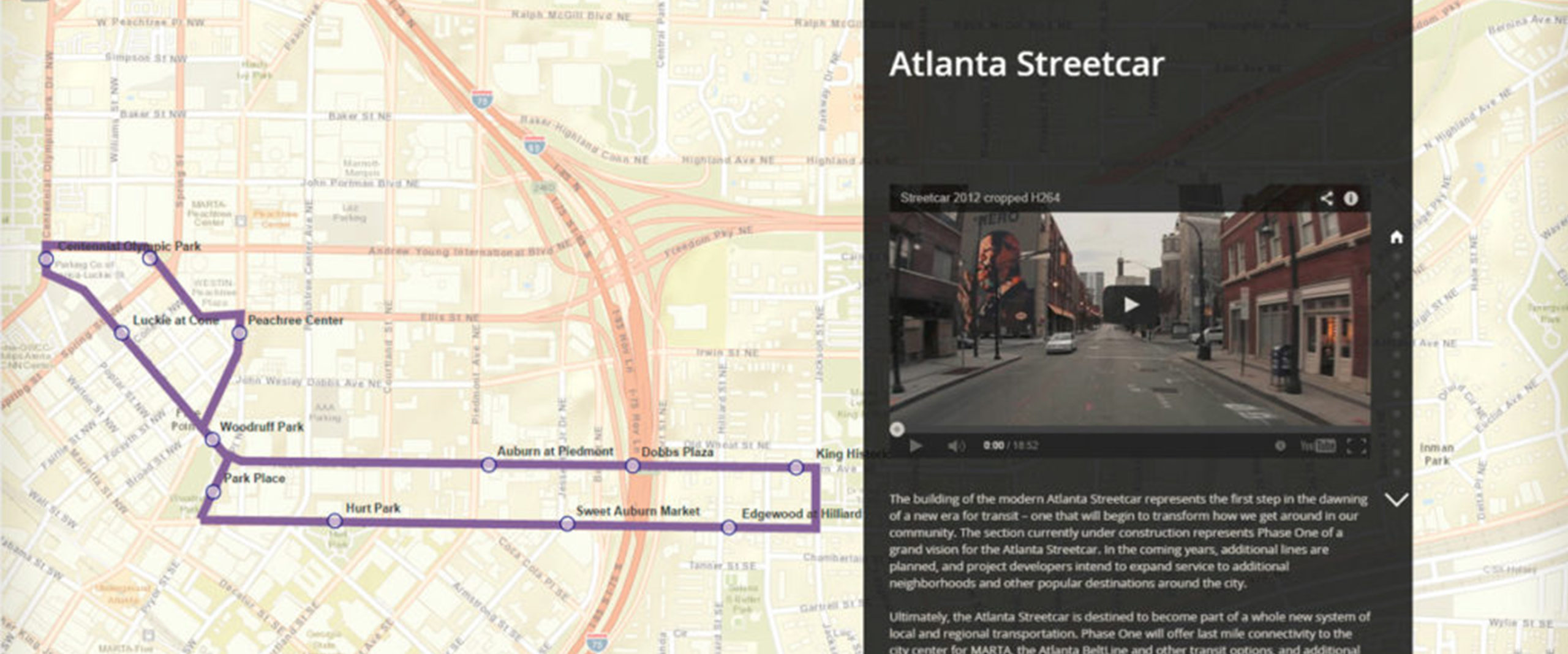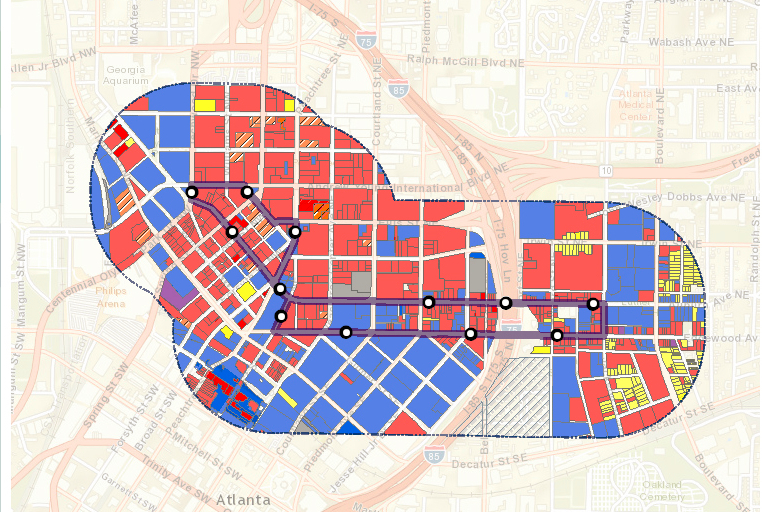Maximizing the Potential of the Atlanta Streetcar System
AREA Research, in partnership with the Georgia Institute of Technology, worked with the Atlanta Downtown Improvement District (ADID) to develop a system for tracking and analyzing the benefits associated with the construction of the Atlanta Streetcar. The scope of the work began by working closely with ADID to clearly define the research project and will end with the delivery of a robust system that allows ADID to periodically evaluate the benefits of the streetcar relative to the city and recalibrate goals as necessary over time. The project focused on creating two primary products:
1. Performance Measures & Baselines
The first product is a comprehensive set of performance measures and baseline values that will be used to measure the benefits of the Atlanta Streetcar. The metrics are developed from three primary areas of investigation. The first is a review of case study projects to determine which existing transit systems have developed performance measures, how those metrics are defined, and how the metrics are tracked and calculated.
The second area of investigation is an evaluation of existing data for potential use as a performance measure. Data sources that already exist and are updated at regular intervals can be an efficient means to easily establish baseline values against which future changes can be compared and analyzed.
The final area of investigation is to define new performance measures. In the case of new these new metrics, data collection methods and update intervals will need to be defined. Historical baselines may not be readily derived but may be established as the streetcar begins operation and used to inform future phases and the development of other systems.
2.Tracking & Analytical Database
Analyzing the Atlanta Streetcar based on myriad metrics and benchmarks implies the collection of a vast amount of data from a variety of sources and often at very different time intervals. The second product of this research project is the development of a database that facilities the collection and organization this data. Its intuitive interface requires minimal training for those who oversee its day-to-day operation and periodic update.
The tracking database also consists of an analytical feature set that has the ability to summarize and compare database information based on user input. Users have the ability to select certain metrics for comparison and analysis over a specified time range. Results and trends are generated and compared to pre-established benchmarks would be the foundation for gauging the benefits of the streetcar and informing future phases of development.

